Your vehicle is equipped with a tire inflator kit. It is located behind the driver's seat of your vehicle. Use the following directions for use of your tire inflator kit instead of directions you may find on or near the kit.
The repair kit contains the following:
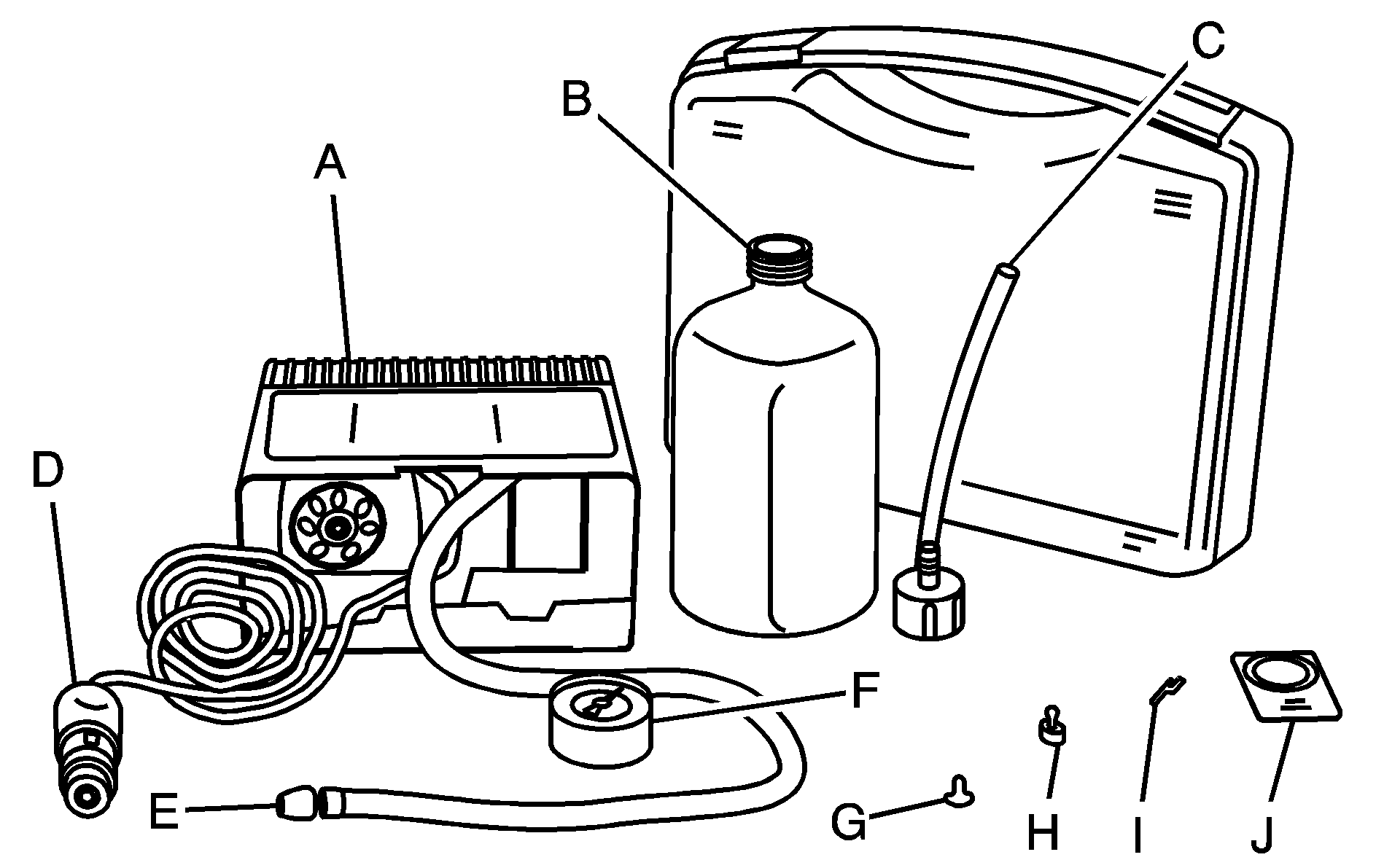
Air Compressor
Tire Sealant
Sealant Filling Hose
Air Compressor Accessory Plug
Air Compressor Inflator Hose
Air Pressure Gage
Sealant Filling Hose Plug
Valve Core Remover
Spare Valve Core
55 mph (90 km/h) Label
Accessing the Tire Inflator Kit
To access the tire inflator kit for use, do the following:
- Loosen the two nuts holding the tire inflator kit cover in place.
- Remove the cover.
- Grasp the handle and pull the tire inflator kit out.
- Open the tire inflator kit case by lifting up the two tabs located on either side of the kit handle.
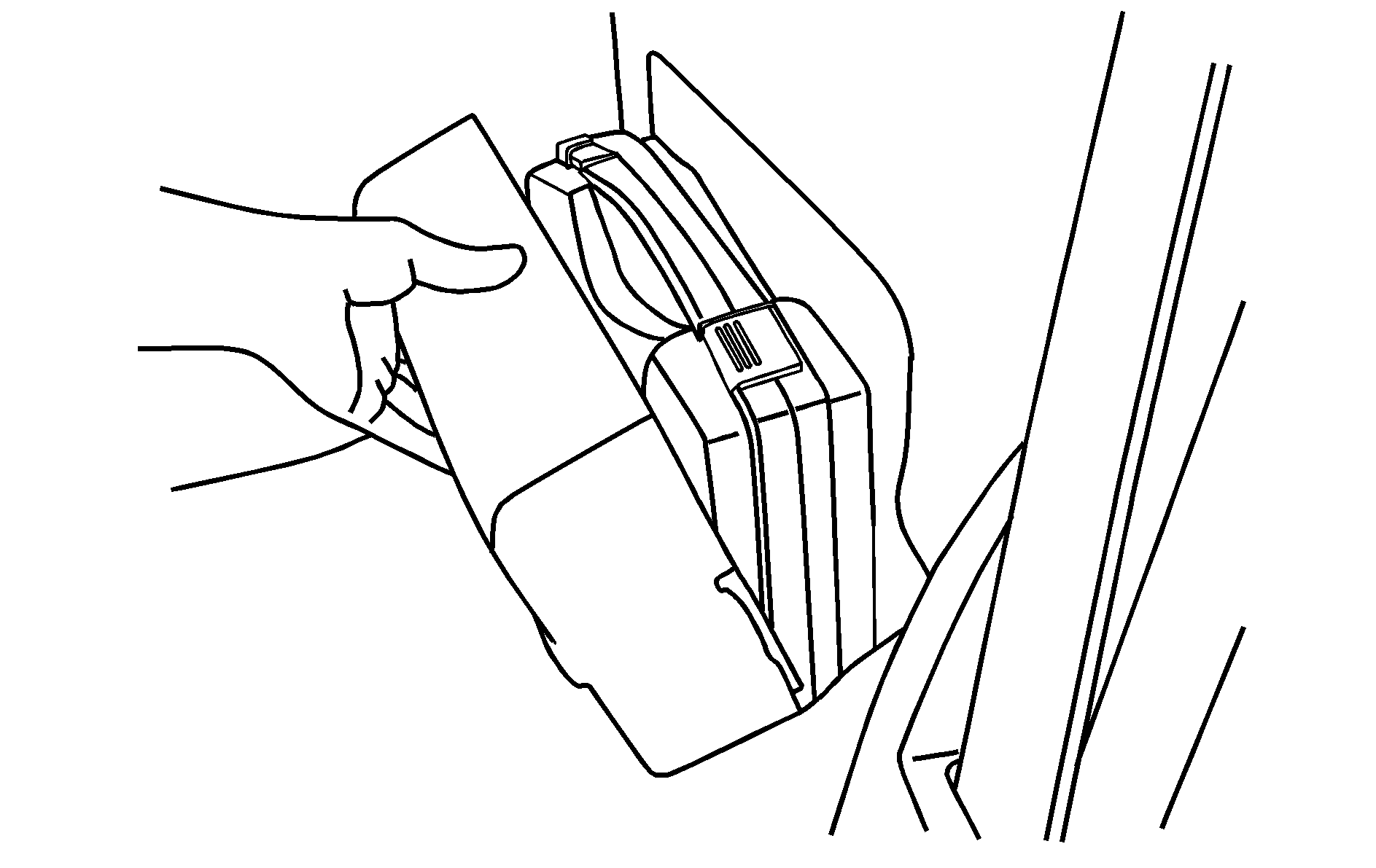
Tire Sealant
The kit contains a liquid sealant that when injected into a flat tire, may temporarily repair nail holes or cuts in the tread area of the tire. The tire sealant cannot repair tire damage caused while driving on a flat tire or a tire that has had a "blow out" or a tire that has punctures in the sidewall areas. The tire sealant solution is a one-time use application for one tire only. Check the tire sealant expiration date; the sealant may not be as effective beyond the expiration date. The tire sealant can be peeled off easily after drying.
Using Tire Sealant
Before using the tire sealant, be sure the valve stem area is clean and free of debris, such as mud, snow, ice, brake dust, etc. The valve stem should be located at the bottom of the tire before applying the tire sealant.
To apply the tire sealant, do the following:
- Turn the valve cap on the tire valve counterclockwise to remove it.
- Remove the valve core using the valve core tool provided in the tire inflator kit. An extra valve core is also provided in the kit.
- Shake the bottle to make sure the sealant is well mixed.
- Attach the tire sealant filling hose to the bottle of tire sealant to pierce the seal on the bottle.
- Remove the sealing plug from the end of the filling hose and insert the end of the hose over the tire valve.
- Hold the bottle upside down over the tire valve and squeeze the sealant into the tire until the bottle is empty.
- Remove the sealant filling hose from the tire valve and reinstall the sealing plug.
- Insert the valve core back into the tire valve. Turn valve core tool clockwise to secure the valve core.
Once the tire sealant is applied, you can use the compressor to inflate the tire.
Air Compressor
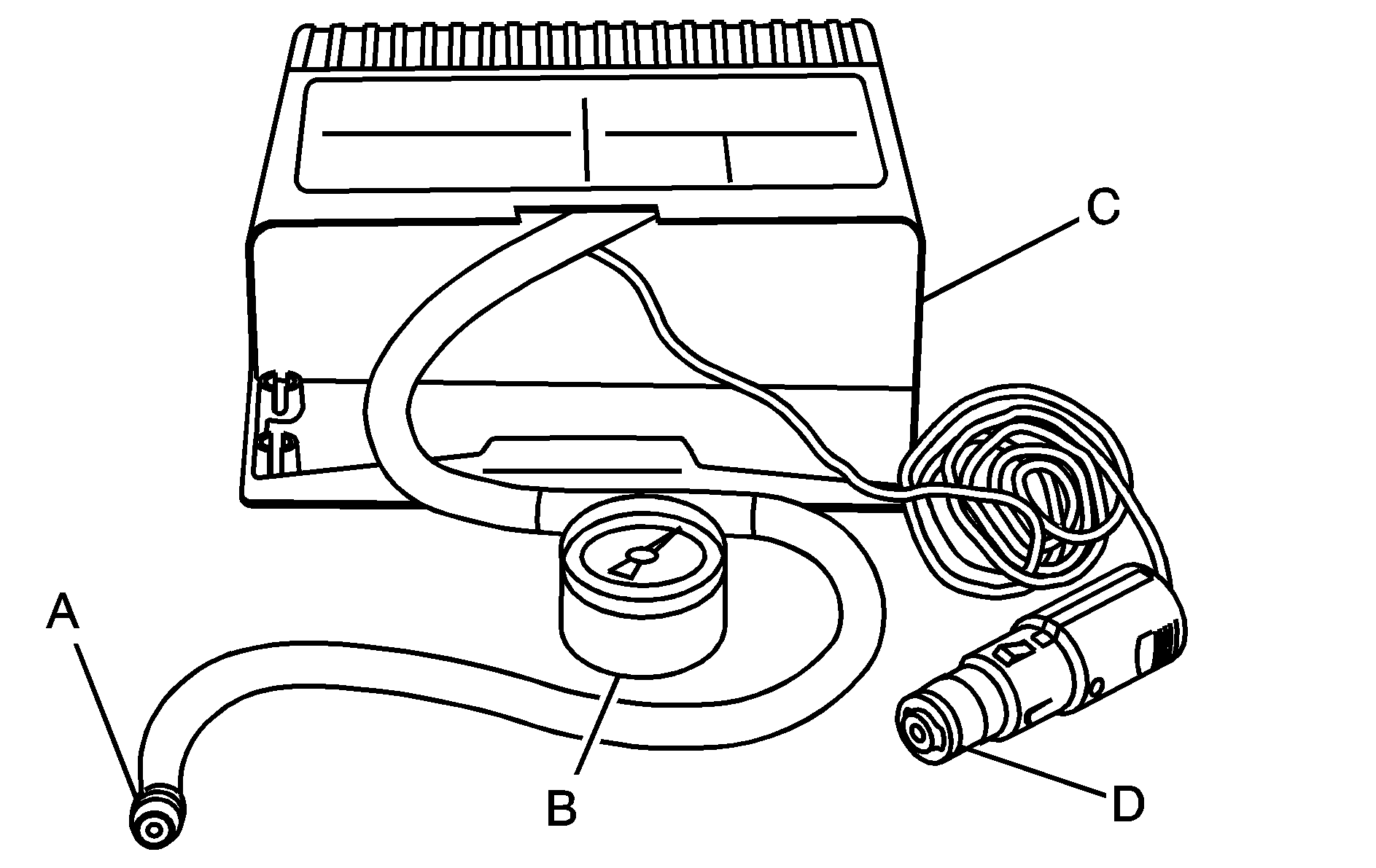
Inflating Hose
Air Pressure Gage
ON/OFF Switch
Air Compressor Plug
The air compressor included in the tire inflator kit was designed exclusively for your vehicle. After the sealant has been injected into the flat tire, use the air compressor to inflate the flat tire. Follow these instructions:
- Put the transmission in PARK (P) and apply the parking brake. See Shifting Into Park and Parking Brake .
- Attach the nozzle on the compressor to the valve stem of the flat tire, and then insert the plug into an accessory power outlet on your vehicle.
- Start your vehicle.
- Turn the compressor on to inflate the tire.
- If 26 psi (179 kPa) tire pressure is reached in six minutes or less, disconnect the air compressor.
- The maximum speed label reminds you to drive cautiously and not to exceed 55 mph (90 km/h) until you have the damaged tire inspected and repaired.
- Drive the vehicle immediately to distribute the tire sealant evenly inside the tire.
- After driving for 10 minutes, recheck the tire pressure. If the tire pressure is 19 psi (131 kPa) or more, inflate the tire to the standard operating pressure as shown on the Certification/Tire label located on the edge of the driver's door.


Caution: Idling the engine in a closed-in place or with the climate control system off can cause deadly carbon monoxide (CO). See Engine Exhaust .
Notice: The car engine must be running to avoid draining the battery while running the air compressor.
Caution: Overinflation could cause the tire to rupture, and you or others could be injured. Be sure to read the inflator instructions, and inflate the tire to its recommended pressure. Do not exceed 36 psi (248 kPa).
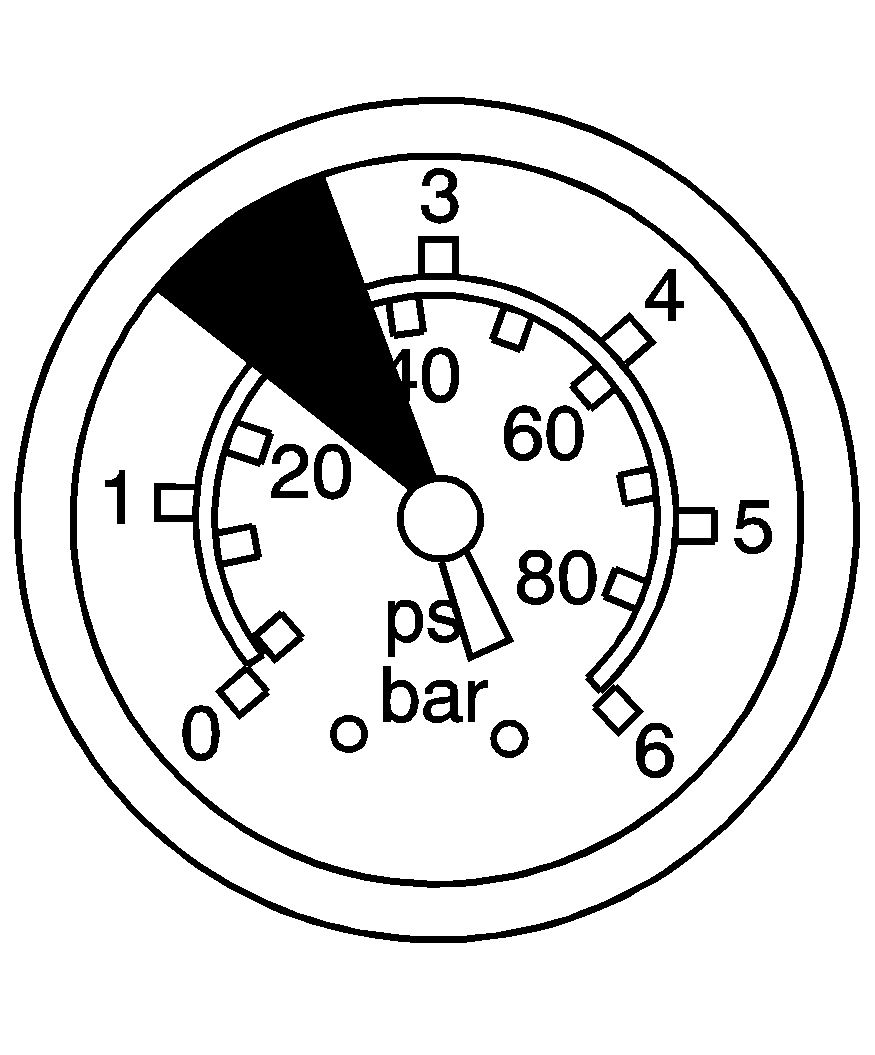
Inflate the tire to at least 26 psi (179 kPa), but not more than 36 psi (248 kPa).
Notice: If the air compressor runs for more than six minutes, at a time, it may overheat. The excessive heat could damage the compressor. Always operate the compressor for six minutes or less when inflating a tire.

Inflate the tire for up to a maximum of six minutes.
Notice: If 26 psi (179 kPa) tire pressure cannot be reached after six minutes the vehicle should not be driven further. Damage to the tire is severe and the sealant will not be effective. Remove the air compressor plug from the accessory power outlet and unscrew the inflating hose from the tire valve. See "Roadside Assistance" in the Index.
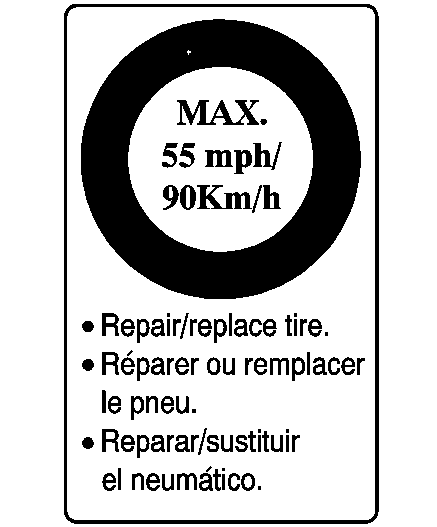
Attach the enclosed maximum speed label to the inside upper left corner of the windshield or to the face of the radio/clock.
If the tire pressure has dropped below 19 psi (131 kPa), do not continue to drive the vehicle. The tire is severely damaged and the tire sealant will not be effective. Repair or replace the tire as soon as possible.
Tire Inflator Kit Storage
The tire inflator kit is stored behind the driver's seat in your vehicle. To reinstall the kit after use, do the following:
Caution: Storing the tire sealant and compressor kit or other equipment in the passenger compartment of the vehicle could cause injury. In a sudden stop or collision, loose equipment could strike someone. Store the tire sealant and compressor kit in its original location.
- Place the air compressor pump and accessories into the inflator kit case.
- Move the driver's seat forward and tilt the seatback forward out of the way.
- Place the cover over the tire inflator kit.
- Hold the kit with the cover on against the back wall of the passenger compartment in the designated storage area as you perform the next step.
- Reinstall the two nuts holding the tire inflator kit cover in place.
